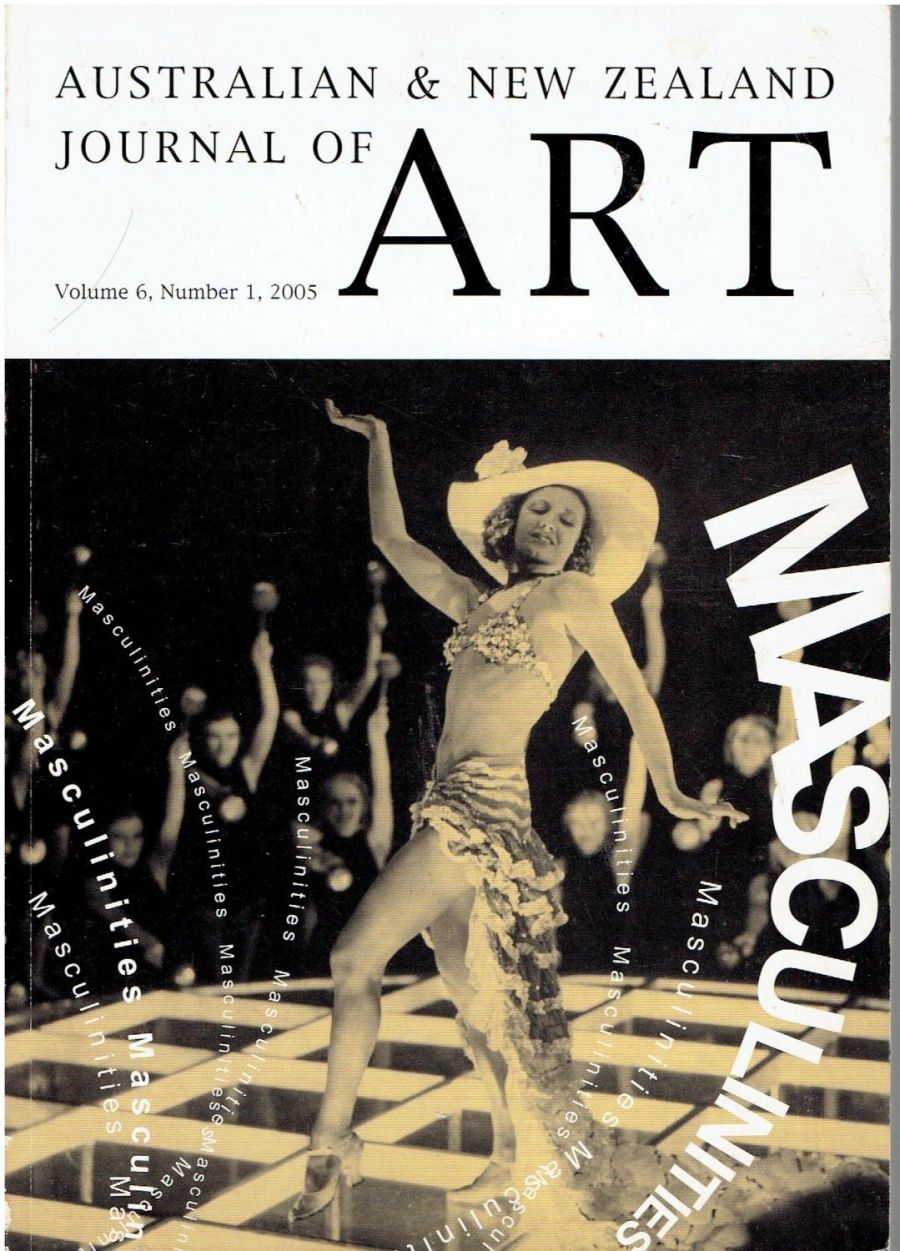
- Free Article: No
- Contents Category: Art
- Review Article: Yes
- Article Title: Australian & New Zealand Journal of Art
- Article Subtitle: Masculinities, vol. 6, no. 1, 2005
- Online Only: No
- Custom Highlight Text:
Australian and New Zealand Journal of Art has dedicated its latest issue to the theme of ‘Masculinities’. This is a timely contribution to debates about the construction of male identity in visual and popular culture in the wake of Brokeback Mountain. The controversy this film has generated has focused on the love affair between two cowboys and the threat seemingly posed to an archetypal bastion of manhood, but if you remove the queer element, you have a work that isn’t so different from conventional films such as The Man from Snowy River. A similar quandary is posed by Ross Moore’s standout essay on James Gleeson and the ‘de-gayification’ of his paintings by art writers. Gleeson may have avoided decades of controversy, but delete the queer reading from his imagery and he becomes unproblematically Australia’s greatest surrealist painter.
- Book 1 Title: Australian & New Zealand Journal of Art
- Book 1 Subtitle: Masculinities, vol. 6, no. 1, 2005
- Book 1 Biblio: Art Association of Australia and New Zealand, $29 pb, 150 pp
- Book 1 Cover Small (400 x 600):

- Book 1 Cover (800 x 1200):

The most engaging essays in this periodical are the ones that locate the traits of masculinity in unexpected quarters and expose facets of male artists that challenge existing proto-types. Andres Mario Zervignon discusses the politics and dangers confronting drag queens in Nazi Germany and their unexpected influence on gay identity on a global scale. These daring performances were as much about self-preservation as was Gleeson’s reticence about his own preferences, and reveal the different ways in which artistic expression can work as a strategy for surviving persecution within prevailing power structures. Stephen Eisenman’s protagonists are the unlikely duo of William Morris and Paul Gauguin, united in their opposition to the dominant imperialist cultures. His essay resists the usual primitivist reading of Gauguin’s work by focusing on the artist’s impassioned protest against the religious and social reforms imposed on the indigenous Tahitian community he idealised.
Debates on masculinity are intertwined with debates on morality, and these essays excavate the moral high ground and offer multiple interpretations of masculinity by reworking the stereotypes and commenting on the marginal and underground. Today’s clichés of manhood become tomorrow’s Mardi Gras floats.


Comments powered by CComment